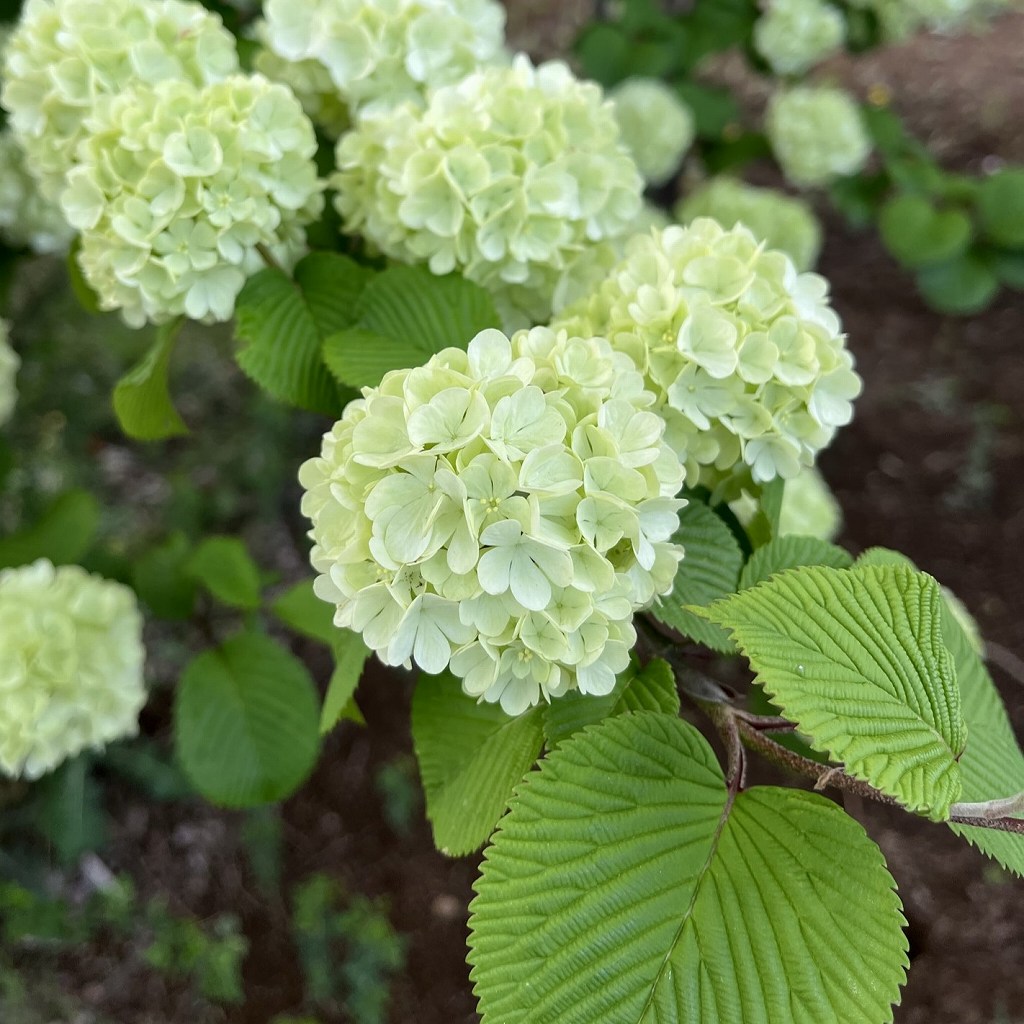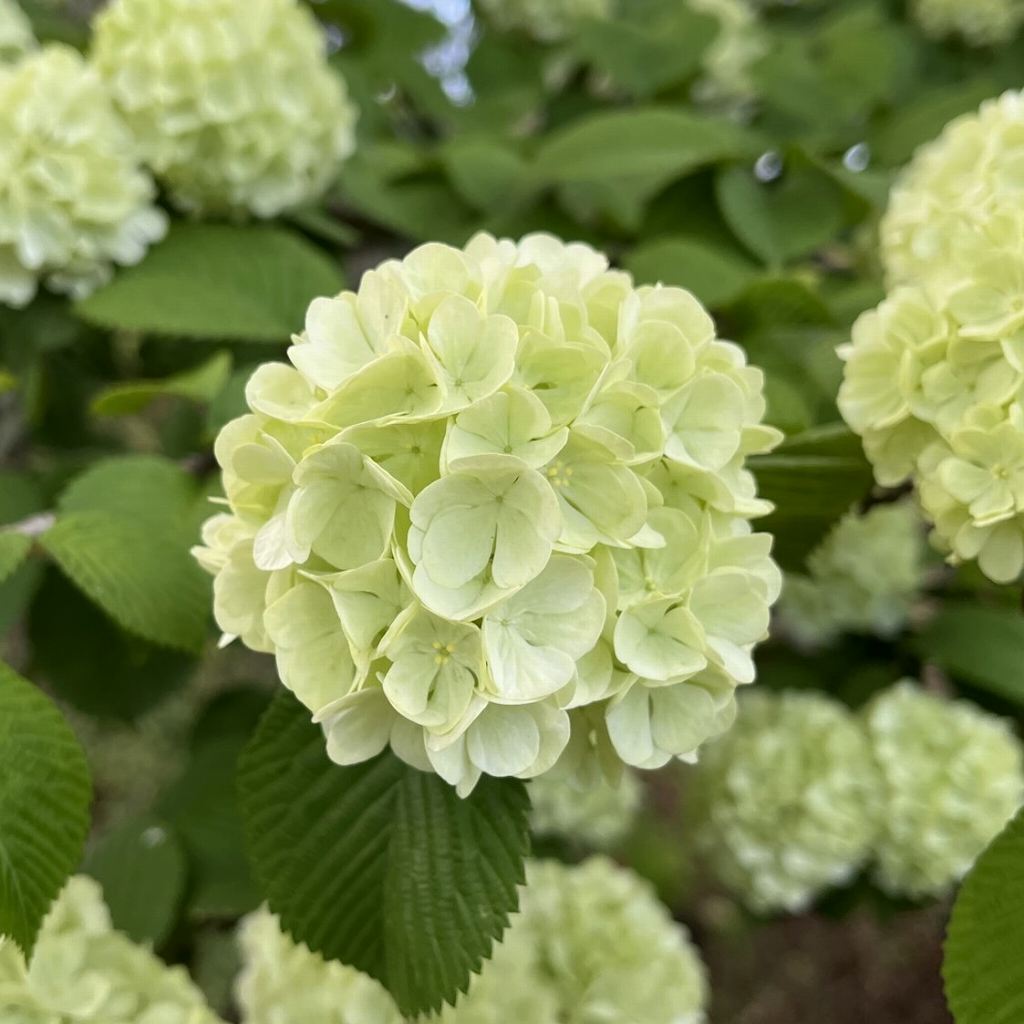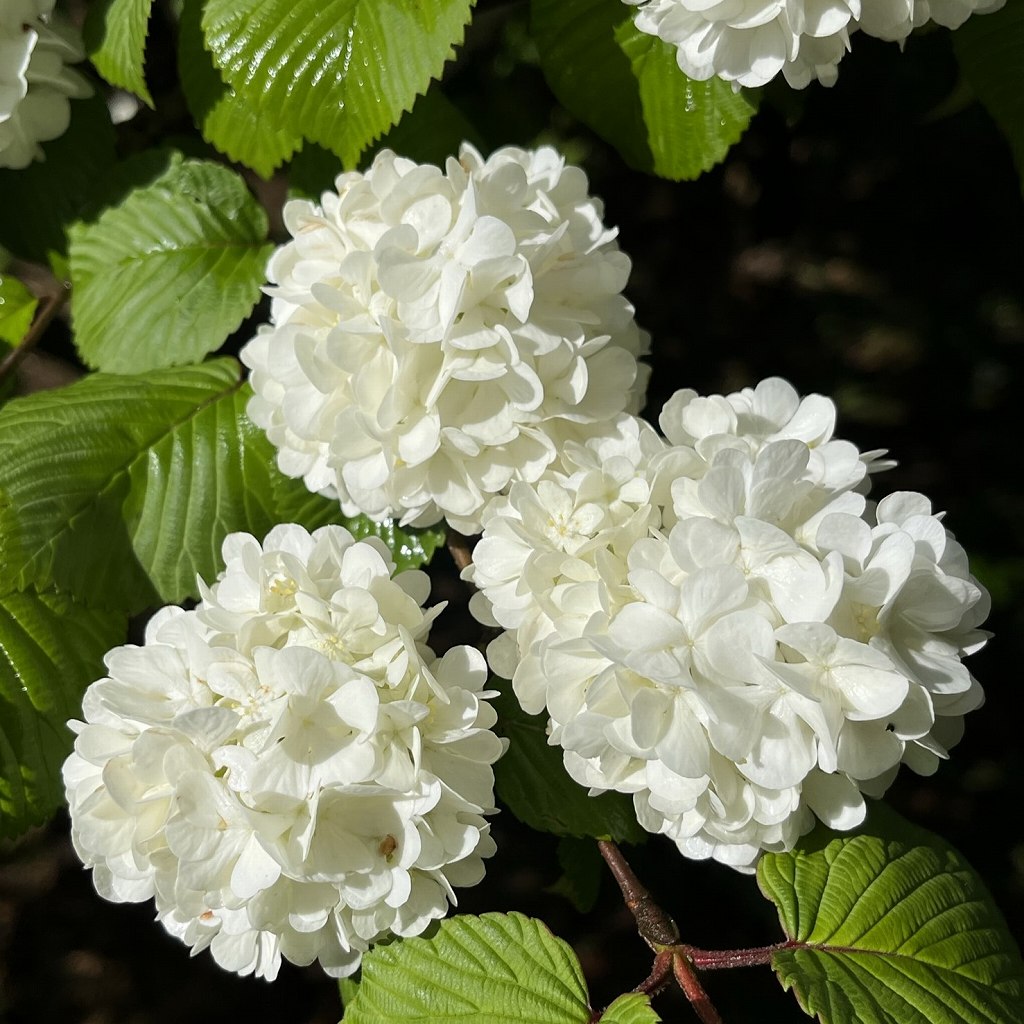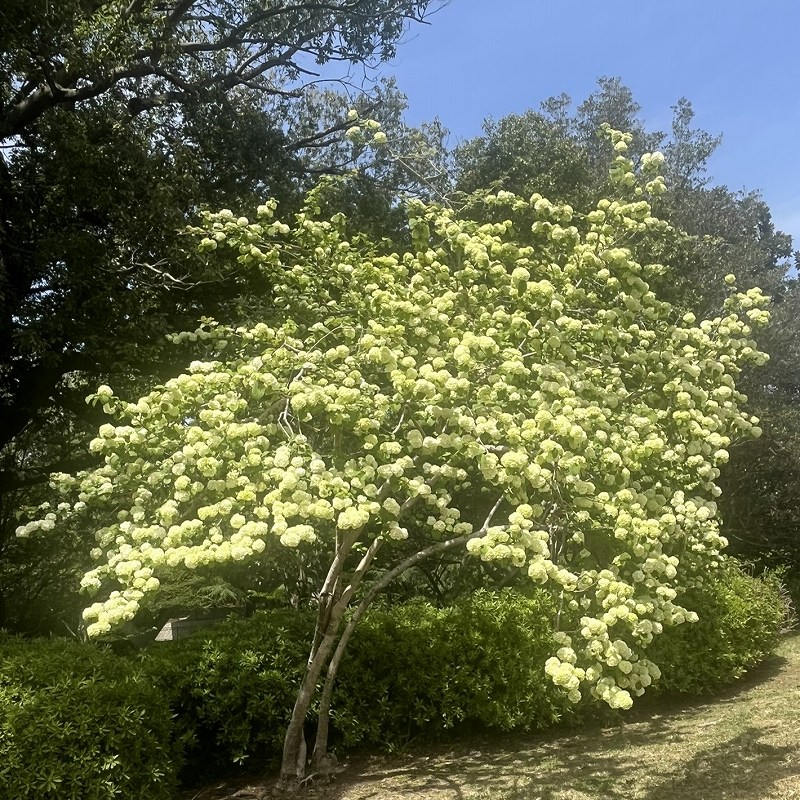オオデマリは花が集まって丸みを帯び、大きな手鞠のよう。手鞠咲きの紫陽花に似ていますが、装飾花が花弁で枝の節々に咲く初夏の花です。
Japanese Snowball’s flowers are clustered together in a rounded shape that looks like a large ball. It is similar to the ball-blooming Hydrangea, but the decorative flowers are made of petals and the flowers bloom at nodes on the branches in early summer.
【仮名】オオデマリ, テマリバナ
【和名】大手毬, 手鞠花
【英名】Japanese Snowball
【学名】Viburnum plicatum
【誕生】03/ 06, 04/ 24, 05/ 27
【開花】04, 05, 06月
【花色】White, Green
オオデマリ
オオデマリの概要

オオデマリはガマズミ科ガマズミ属の落葉低木です。和名の由来は花が集まって丸みを帯び、大きな手鞠のようだから。花の形は手鞠咲きの紫陽花によく似ています。紫陽花は装飾花が萼片で、枝の先端に咲く梅雨の花。一方、大手毬は装飾花が花弁で、枝の節々に咲く初夏の花です。
オオデマリの原種

オオデマリの変種「藪手毬」は大手毬の原種です。学名では大手毬が標準種ですが、系統の順序は藪手毬が先。藪手毬は本州の関東地方から四国、九州まで分布しています。花序は真ん中が小さな両性花、周りが花弁5枚の装飾花。花後、赤色の核果を結び、熟すと黒色に変わります。
オオデマリの姿形

オオデマリの幹は樹皮が褐色で、縦皺が入り、枝が盛んに分岐します。葉は丸みを帯びた卵形で、先端が尖り、葉脈が深く、対生。花は花弁5枚の装飾花が集まって丸くなります。咲き始めは緑色、咲き終わりは白色。装飾花は雄しべと雌しべが退化しているので花後に結実しません。
オオデマリの近縁

オオデマリの近縁種「西洋肝木」は欧州に分布し、古くから庭に植えられます。葉は3裂で縁が波打ち、柄に蜜腺。両性花の周りを装飾花が囲み、花後に赤色の核果を結びます。その変種「ステライル」は花序全体が装飾花。大手毬に似ていて、英名で「スノーボール」と呼ばれます。
Japanese Snowball

Japanese Snowball is a deciduous shrub in the Viburnaceae family. The Japanese name means “big ball”. This is because the flowers gather together and form a round shape. The flower shape is very similar to Hydrangea, which blooms like a ball. Hydrangea is a rainy season flower whose decorative flowers are sepals and bloom at the tips of branches. On the other hand, Japanese Snowball has decorative petals and is an early summer flower that blooms at the joints of branches.
The scientific name of Japanese Snowball is Viburnum plicatum, and the variety “tomentosum” is the original species of plicatum. The standard species is plicatum in scientific name, but tomentosum comes first in phylogenetic order. tomentosum is distributed from the Kanto region of Honshu to Shikoku and Kyushu. The inflorescence is a small hermaphrodite flower in the center, surrounded by decorative flowers with five petals. After flowering, it produces red drupes that turn black when ripe.
Japanese Snowball’s trunk has brown bark, vertical wrinkles, and heavily branched branches. The leaves are rounded, oval, pointed at the tips, deeply veined, and opposite. The flowers are made up of decorative flowers with five petals. The flowers are green at the beginning of bloom and white at the end. Decorative flowers have degenerated stamens and pistils, so they do not bear fruit after flowering.
“Viburnum opulus”, a related species of Japanese Snowball, is distributed in Europe and has been planted in gardens since ancient times. The leaves are trilobed with wavy edges and have nectary glands on the petioles. Decorative flowers surround the hermaphrodite flowers, and produce red drupes after flowering. In its variety “sterile” the entire inflorescence is a decorative flower. It is similar to Japanese Snowball and is called “Snowball” in English.


